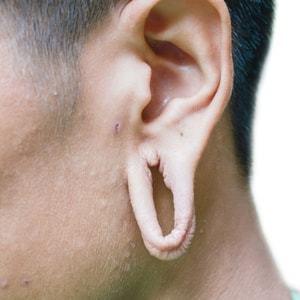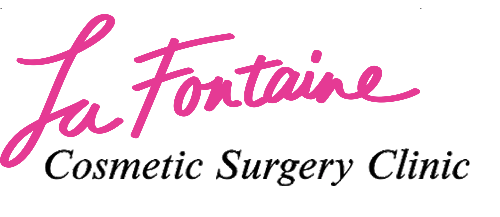Dr. Leonard Bienenstock, M.D.
The newest addition to our esteemed pool of doctors is Dr. Bienenstock. He is a family physician who specializes in simple skin procedures and treatments to alleviate common conditions, increasing quality of life and improving your physical appearance.
With Dr. Bienenstock on board, La Fontaine Cosmetic Clinic in Toronto now offers various nonsurgical skin procedures to get rid of moles, skin tags, warts, keloids, unsightly scars, cysts and more.
Certification & Areas of Practice
As a family physician certified by the College of Family Physicians of Canada (CFPC) and a member of the College of Physicians and Surgeons of Ontario (CPSO), Dr. Bienenstock can treat patients with a wide range of skin ailments using simple, nonsurgical cosmetic procedures.
His goal is to provide patients like you with utmost comfort during and after treatment, allowing you to enjoy physical and emotional relief from your skin condition.
Aside from skin treatments, Dr. Bienenstock also treats other minor ailments that hamper good health.

CONSULTS ON COLD AND FLU CASES, RASHES, BLOOD PRESSURE PROBLEMS, INFECTIONS, BODY PAIN, AS WELL AS ADMINISTERS VACCINES AND PRESCRIBES PRESCRIPTIONS.
Medical Education & Training
Dr. Bienenstock completed his residency at the University of Toronto Department of Family and Community Medicine and trained at the University Health Network Toronto Western Hospital. He completed a Bachelor of Science in Major Physiology in 2005, and Medical School in 2009 from McGill University. Here he was nominated for the Exceptional Empathy, Exemplary Physicianship, and High Standards of Professionalism Awards.
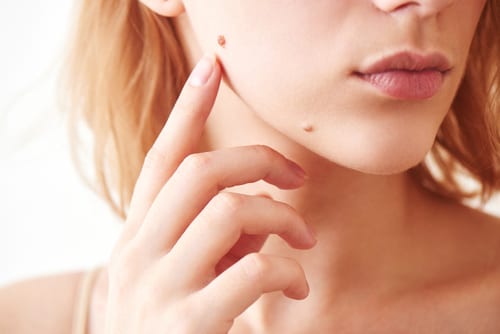
Mole Removal
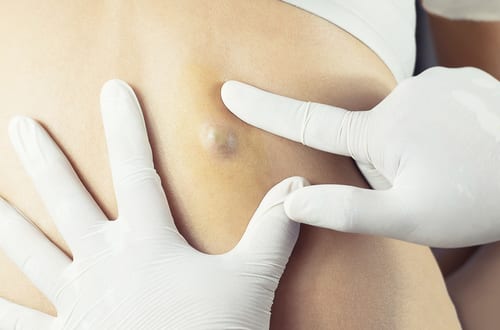
Cyst Removal
Innovations
Aside from maintaining a busy family practice, Dr. Bienenstock has also taught at the University of Toronto. He served as a preceptor in the Family Medicine Longitudinal Experience where he received the Exceptional Mentor Award, an award chosen by students. He has performed quality improvement research on Telephone Consultations in a Primary Care Setting at the Toronto Western Hospital`s Family Health Team, and Urinary Incontinence which was published in the Reference Manual of Primary Care helping develop a simplified management algorithm for bladder leakage.
As a family doctor, Dr. Bienenstock is committed to supporting patients in achieving better physical physical, emotional, and spiritual health.
Skin Treatments Performed
Here are some of the most common non-surgical skin treatments that Dr. Bienenstock performs. Browse our non-surgical skin treatments for more.
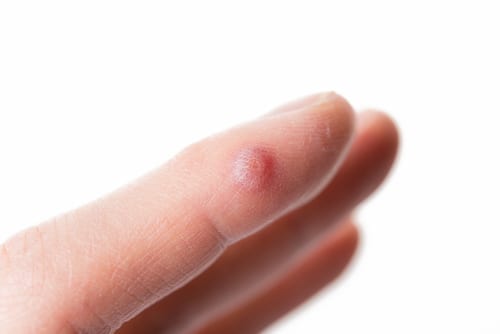
Wart Removal
BOOK A CONSULTATION TODAY WITH DR. BIENENSTOCK FOR NONSURGICAL COSMETIC TREATMENTS THAT CAN HELP YOU ACHIEVE HEALTHY SKIN.
Procedures and Conditions
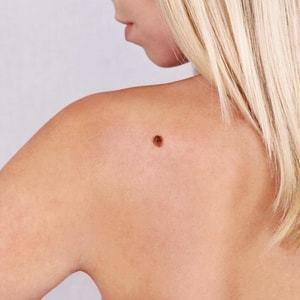
Moles
Occur when cells in the skin grow in a cluster instead of being spread throughout the skin. These cells are called melanocytes, and they make the pigment that gives skin its natural color. Moles may darken after exposure to the sun, during the teen years, and during pregnancy. Procedure options Complete removal by surgical excision with suturing of the surrounding normal skin together Debulking (removing a portion, but not all of it).
Skin Tags
A skin tag is a small, soft, flesh-colored skin growth that is usually benign (not cancer). They are among the most common bumps on adult skin. Skin tags are harmless but can be an annoying, itchy problem that interferes with clothing, jewelry. They tend to occur on the eyelids, neck, armpits, groin folds, under the breasts or elsewhere. Procedure options Freezing using very cold liquid (cryotherapy) Sharp blade excision.
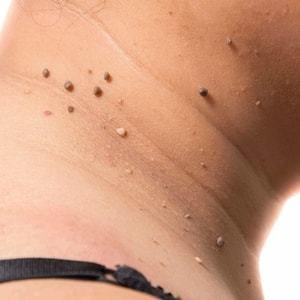
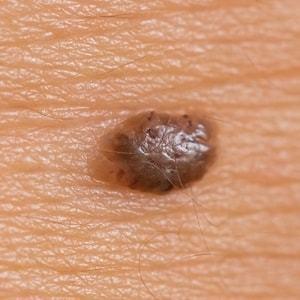
Keratosis
One of the most common non-cancerous growths on the skin, keratosis appears as a brown, black, or light tan growth found on the back, shoulders, face, or chest. It may also appear scaly or waxy, and at times, slightly elevated. It is important for a medical provider to assess keratoses because they may look similar to moles with the potential for being skin cancer. Procedure options Shave excision Chemical or heat cautery Freezing using very cold liquid (cryotherapy) Curettage, or scraping the surface of the skin with a specialized instrument.
Keloid
A type of raised scar, they occur where the skin has healed after an injury. They can be firm pink to red in colour. They can grow to be much larger than the original injury that caused the scar. They tend to occur on shoulders, ears, chest and back. Anything that can cause a scar can cause a keloid. This includes being burned, cut, or having severe acne (also known as scarring acne). People with darker skin tones or people of certain ethnicities (African, Asian descent etc..) are at higher risk of developing keloids. Procedure options Complete removal of the keloid by surgical excision and suturing the surrounding skin together Applying a sheet of silicone on the affected area for several months Steroid injections to reduce the size slowly over several months time.

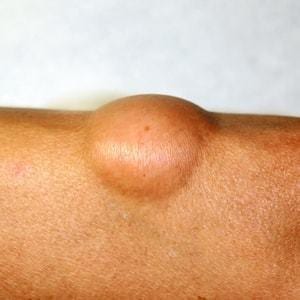
Lipoma
A growth made of fat tissue. They are generally soft to the touch, movable, and painless. They usually occur just under the skin, but occasionally may be deeper. Lipomas are generally not cancerous but sometimes are cancerous. It is important for a qualified professional to examine lipomas to ensure your safety. Procedure options Complete removal by surgical excision with repair of the overlying skin.
Cyst
These non-cancerous, closed pockets of tissue are usually filled with build-ups of pus, fluid, or other materials. They can appear virtually anywhere on the surface of the skin, developing due to infections, clogged oil glands, or foreign bodies, such as body piercings. Procedure options Complete removal by surgical excision with repair of the overlying skin using sutures Drainage by needle aspiration.
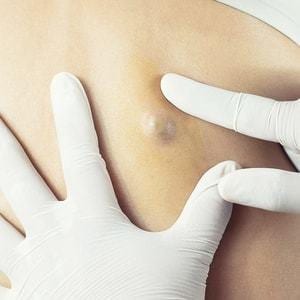
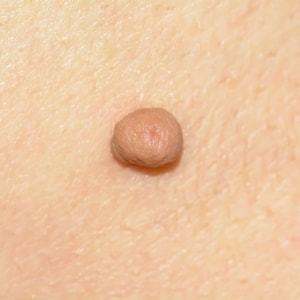
Growth
Growths may be raised or flat and range in color from dark brown or black to skin-colored to red. They may be present at birth or develop later. When the growth is controlled and the cells do not spread to other parts of the body, the skin growth (tumor) is noncancerous (benign). The doctor can make an accurate diagnosis during your visit. Procedure options Consult with the doctor to determine your best option.
Nodules
A category of skin growths, Nodules can develop just below the skin. They can also develop in deeper skin tissues or internal organs. People can mistake other conditions for nodules, such as small cysts, boils, and abscesses. There are many types of nodules so it important that they are examined to ensure non-cancerous Procedure options Complete removal by surgical excision with repair of the overlying skin using sutures Oral antibiotics, if needed Drainage via needle aspiration.
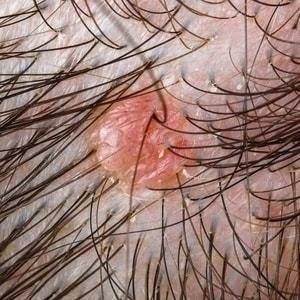
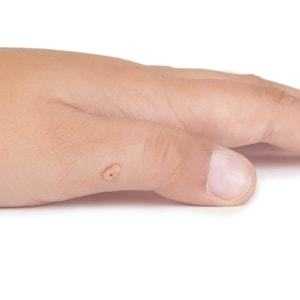
Wart
A small growth with a rough texture that can appear anywhere on the body, common body parts include the hands, feet and genitals. They appear as a solid blister or a small cauliflower. Warts are caused by viruses in the human papillomavirus (HPV) family. Warts can spread to other areas of the skin but this can be prevented with treatment. Some wart treatments are free with valid OHIP coverage. Procedure options Prescription cream, applied regularly over several months Freezing using very cold liquid (cryotherapy) Shave excision Punch biopsy excision.
Painful Pimple
Pimples develop on the surface of the skin due to inflammation in the pores. The pore becomes inflamed as a result of bacteria, oil, and dead skin cells building up. To combat this, the body releases white blood cells, and the resulting inflammation creates a pimple. Pimples become painful when they occur in pores close to a nerve. Procedure options Acne Extraction: Sterile instruments to remove them Incision and Drainage: Involves a sterile needle and surgical blade to perform a small incision to open the blemish and drain the build up Steroid injection: A medication that can be injected to reduce risk of scarring and speed up healing.
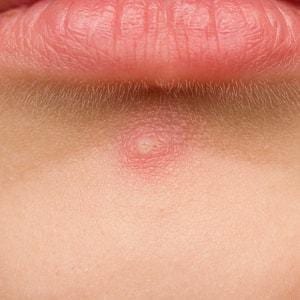
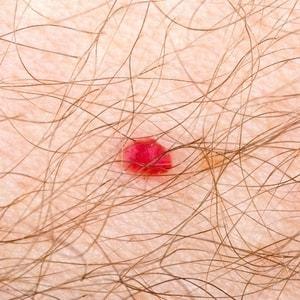
Cherry Spot
Red moles, or cherry angiomas, are common skin growths that can develop on most areas of your body. The collection of small blood vessels inside a cherry angioma give them a reddish appearance. Procedure options Surgical removal of the spot and skin underneath with repair by suturing the surrounding normal skin together Freezing using very cold liquid (cryotherapy) Chemical cautery of the spot.
Earlobes Repair
Earlobes can become damaged, misshapen over time with aging, heavy earrings, multiple piercings, or injury. Some earring styles space the earlobe edges apart and leave a wide gap. The long-term appearance can be unpleasant, and earrings can sag too low.
